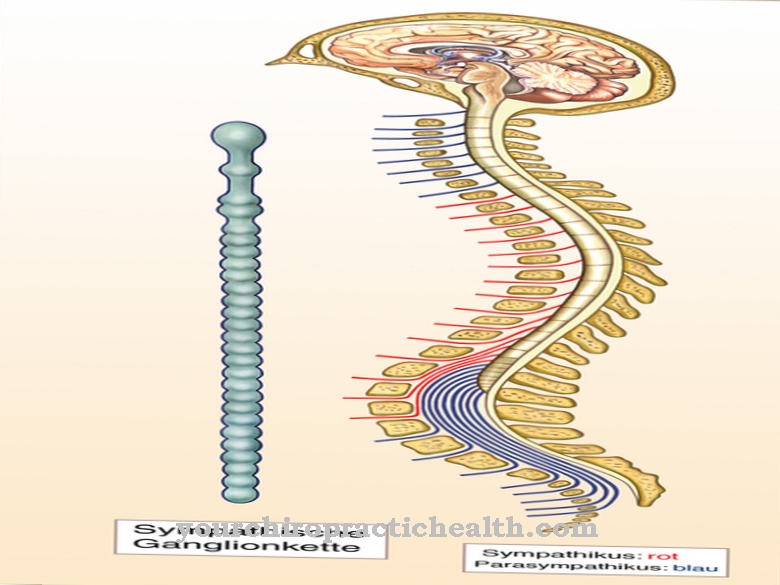Under the toxicology will the Doctrine of Toxins understood and related research and treatment of poisoning. This particularly refers to the health-damaging effects that individual chemical substances have on living things.
Toxicology examines the form of the effects, the extent of the damage and the interactions on which the poisoning is based. This allows hazards to be better interpreted and a possible risk to be better assessed. The subject is mostly associated with pharmacology, as research in these areas often overlaps.
What is the toxicology?

The field of toxicology is based on the teachings of the researcher and doctor Paracelsus, whose findings shaped the 16th century. He determined that there are basically neither toxic nor non-toxic substances, but rather the dose of a substance determines the toxic effect and only becomes a harmful substance in increased concentration. The substance itself can be both poison and non-poison.
Current research in toxicology also assumes that the concentration determines the degree of the toxic effect and that the risk of actual poisoning is rather low. Carcinogenic substances represent the exception of a higher risk. These are called genotoxic carcinogens. The exception for mutagenic substances, so-called mutagens, also applies. No precise limit can be specified here.
The root word "Toxon" actually comes from the Greek and is related to the poisoned arrow. Due to its rapid and deadly effect, this was prepared with toxic plant poison or contaminated corpse poison, which paralyzed muscles, respiration or the heart or brought them to a complete standstill.
In the 17th century, the doctrine of poisons finally aroused a particularly high level of interest, since at this time more poisonous murders were committed, whereby the perpetrators could often not be caught because there were not enough detection methods. The main poison at that time was arsenic. The poisoning became almost something of a fad. The murder with arsenic had a long tradition, reaching an incredible climax in the 19th century. Therefore it became necessary to deal with the poisoning. The then completely new research area of toxicology emerged.
The founder was the chemist Mathieu Orfila. For a time, of course, he was particularly interested in arsenic, and finally James Marsh, who was also a chemist, provided evidence of arsenic in human blood. The Marsh‘ sample, which was used to determine arsenic in the body, is named after him. After this method was discovered, the arsenic murders soon ceased.
Treatments & therapies
The research area of toxicology mainly investigates exposure to chemical substances and thus serves preventive and protective measures in various areas. Doctors in particular can use the teaching to gather knowledge for treatments and better recognize symptoms of intoxication.
While toxicology was primarily concerned with the detection and treatment of acute symptoms of intoxication in its beginnings, the question nowadays is more of the question of the harmful effects of the substances when they are absorbed in very low concentrations. The body's exposure to foreign substances that are present in the air we breathe, in food, in drinking water and in the soil, is being investigated in more detail. Carcinogenic substances due to environmental influences must z. B. be examined more intensively. These include dioxins, PCBs, fine dust, diesel soot particles and hydrocarbons.
Medicines are also tested for their side effects. The drugs are carefully checked in advance for approval for the market and, in the case of a new development, are extensively tested for their effects. This is done through animal experiments, but, due to the critical evaluation of such tests, also through alternative methods, especially at the biochemical and molecular level. New tasks form e.g. B. the development of pharmaceuticals or foods that are produced by genetic engineering or the research of such organic genetic modifications on the human organism.
Through toxicology, all substances are classified into limit values and guidelines, more precisely differentiated into mutagenic, carcinogenic or toxic to reproduction. Both a risk assessment and the intensive analysis of all mechanisms of action are an important task of this science, which is based on biological, physical, biochemical and medical data.
Classic sub-areas of toxicology are clinical toxicology, which deals with the treatment of poisoning, and food toxicology, which serves to protect the population and examines substances that are harmful to health, which both occur naturally and are caused by humans. There are also areas that deal with industrial chemicals, commodities, the living environment and the damage that occurs there in water, soil and air, as well as drug toxicology in itself.
Diagnosis & examination methods
Alternative medicine also includes homotoxicology, for example. It is based on the theory of Hans-Heinrich Reckeweg, which states that diseases and their symptoms can be traced back to poisons. The actual illness is therefore only the reaction to internal or external pollutants. These can occur in food, the environment or in the metabolism itself and are known as homotoxins.
The form of the disease is expressed as homotoxicosis, depending on the body's defenses and the duration of exposure to the poison, whereby the body is confronted with the respective toxic phenomenon and tries to combat or excrete it. If the body's defense system is successful, the person is healthy. If there are complications, he gets sick. Then inflammation, diarrhea, vomiting, rash or similar symptoms appear. The therapy, however, is the detoxification of the body.
For this purpose, preparations are used that support the body's self-healing process and are intended to stimulate the detoxification process. Such preparations are basically homeopathic.



























